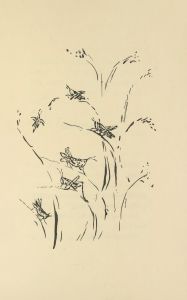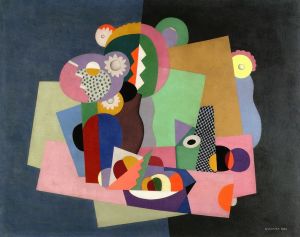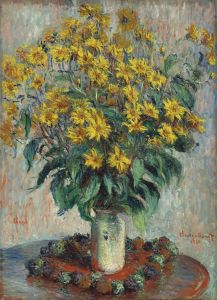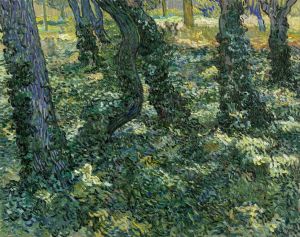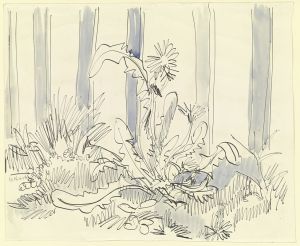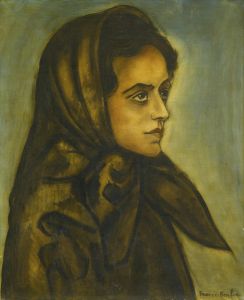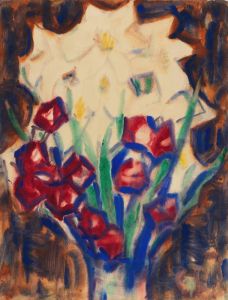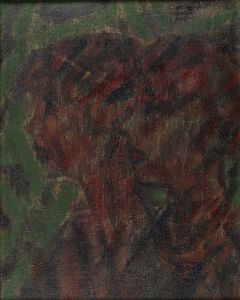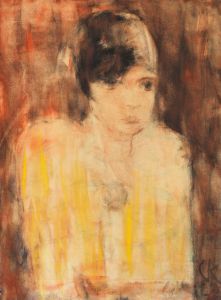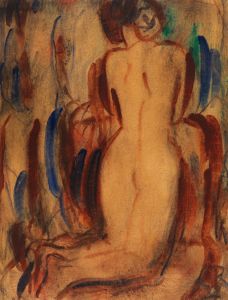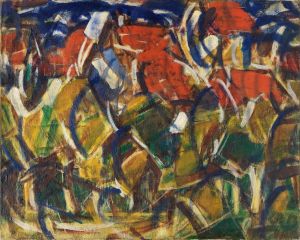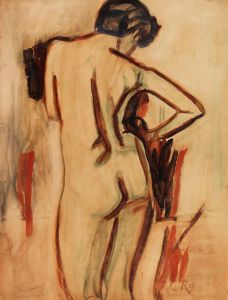
Alpenveilchen
A hand-painted replica of Christian Rohlfs’s masterpiece Alpenveilchen, meticulously crafted by professional artists to capture the true essence of the original. Each piece is created with museum-quality canvas and rare mineral pigments, carefully painted by experienced artists with delicate brushstrokes and rich, layered colors to perfectly recreate the texture of the original artwork. Unlike machine-printed reproductions, this hand-painted version brings the painting to life, infused with the artist’s emotions and skill in every stroke. Whether for personal collection or home decoration, it instantly elevates the artistic atmosphere of any space.
Christian Rohlfs (1849–1938) was a prominent German painter associated with Expressionism. He is known for his innovative use of color and form, which often conveyed emotional intensity. One of his works, Alpenveilchen (translated as "Cyclamen" in English), exemplifies his mature style, characterized by bold brushstrokes and a focus on the interplay of light and shadow.
Alpenveilchen is a depiction of cyclamen flowers, a subject that reflects Rohlfs' interest in nature and organic forms. The painting showcases his ability to abstract natural elements while maintaining their essence. Rohlfs often drew inspiration from the natural world, and his works frequently feature floral motifs, which he rendered with a modernist sensibility. In Alpenveilchen, the flowers are portrayed with a dynamic energy, emphasizing their shapes and colors rather than striving for photographic realism.
Rohlfs' career spanned several significant periods in art history, and his style evolved over time. Initially trained in a more academic tradition, he later embraced Impressionism and Post-Impressionism before becoming one of the leading figures in German Expressionism. His work often explored themes of vitality and decay, and he was particularly interested in the emotional resonance of color.
During his lifetime, Rohlfs received recognition for his contributions to modern art, and his works were exhibited widely. However, his career faced challenges during the Nazi regime in Germany. In 1937, his art was labeled "degenerate" by the Nazis, and many of his works were removed from museums. Despite this, Rohlfs continued to paint until his death in 1938.
Specific details about the creation date or provenance of Alpenveilchen are not widely documented. However, the painting is representative of Rohlfs' later period, during which he focused on expressive compositions and a more abstract approach to his subjects. Today, his works, including Alpenveilchen, are held in various public and private collections, reflecting his enduring influence on modern art.
This concise overview is based on available historical information about Christian Rohlfs and his artistic legacy. Further research into specific archives or museum records may provide additional insights into the context and details of Alpenveilchen.





